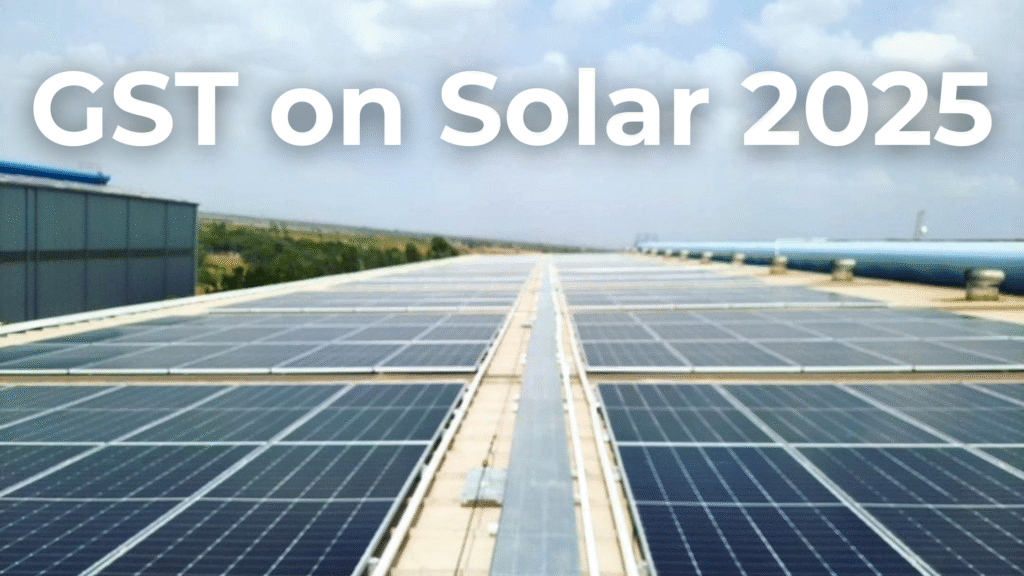The biggest question you’re asking Can India’s evolving GST on renewable energy gear actually lower solar costs and project tariffs, or will the changes complicate procurement and pricing? As rooftop solar adoption accelerates and utility-scale projects expand, even small policy shifts can ripple through the entire value chain—from manufacturers and installers to homeowners and corporate buyers. This media-ready piece explains the current GST landscape for solar equipment, the precise rate changes proposed or enacted, and what these numbers mean in real terms for quotes, payback, and strategy. If you’re buying, selling, or financing solar projects, understanding these dynamics could save money and shorten payback periods.
A Quick Primer
How GST affects solar procurement in India GST isn’t just a tax label; it’s a lever that shapes landed costs, cash flows, and project economics. Solar projects rely on large-ticket purchases: modules, inverters, batteries, balance-of-system (BOS) components, mounting structures, cables, and ongoing maintenance. A few percentage points in the right places can compound into significant lifetime savings.
Changes to GST slabs or ITC treatment for solar components can alter landed costs, cash flows, and the economics of rooftop and utility-scale solar. The impact is often felt in installer quotes and lender terms.
What is the current versus new GST slab on solar equipment (as of 2025)
| Solar Component | HSN Code | GST Rate before 22 Sep 2025 (Old) | GST Rate from 22 Sep 2025 (New) | Remarks |
| Solar PV Module / Panel | 8541 | 12% | 5% | Significant cost reduction in modules, contributing to the overall decrease in renewable energy device prices. |
| Solar Inverters | 8504 | 12% | 5% | Applicable when the inverter is integrated into the solar power device/system, helping reduce capital expenditure. |
| Solar Battery (Storage) | 8507 | 28% | 18% (Non-lithium batteries) |
Lowered to enhance the affordability of solar plus storage solutions. |
| Solar Power Generating System (complete system) | 84/85 series | 12% | 5% | Purchasing as a bundled system, under EPC, or as a composite supply enables access to lower rates. |
| Mounting Structures | 7308 | 18% | 5% | Costs are lower when invoiced as part of a solar system but may incur higher GST if sold separately. |
| Cables, Wires & Accessories | 8544 | 18% | 5% | Standard electrical goods are taxed at 18%, while solar-specific supplies under bundled EPC qualify for the 5% rate. |
Who benefits from this New GST
- Consumers/Homeowners: Apart from “obviously” lowering the electricity bills, by up to 80%; reduced carbon footprint. This will lead to faster payback, reducing upfront costs by 20-40% on government subsidy for residential societies, improved ROI for rooftop solar. This is especially important in states with strong solar adoption like Maharashtra, Gujarat, Goa and Kerala.
- For Businesses and factories: Commercial and industrial rooftops will become more attractive as lower GST reduces upfront project costs.
- Solar developers and EPCs: This will improve project economics, more predictable pricing, potential supply-chain shifts.
- Manufacturers and distributors: This will increase the demand to domestic manufacturing under policy alignments, as the reduced GST improves competitiveness against imported modules.
- Government and policymakers: This is a necessary step to standardize taxation across states, Increase revenue collection for public infrastructure and Bring transparency in the renewable energy supply chain. Schemes such as the PM Surya Ghar Muft Bijli Yojana and Solar Rooftop Yojana will offset the burden of GST and make solar adoption easier for household.
Conclusion
Thanks to subsidies, declining solar PV module prices, and strong government-backed schemes, solar power continues to be an attractive investment for households, businesses, and industries.
A clear understanding of GST on solar panels enables consumers to make smarter decisions and plan their investments effectively. Coming smarter decisions, Contact Weneera Solar today and make your move towards smarter, cost-effective energy. As India advances towards becoming a global renewable energy leader, taxation policies like GST will keep evolving to strike a balance between affordability and economic growth.

